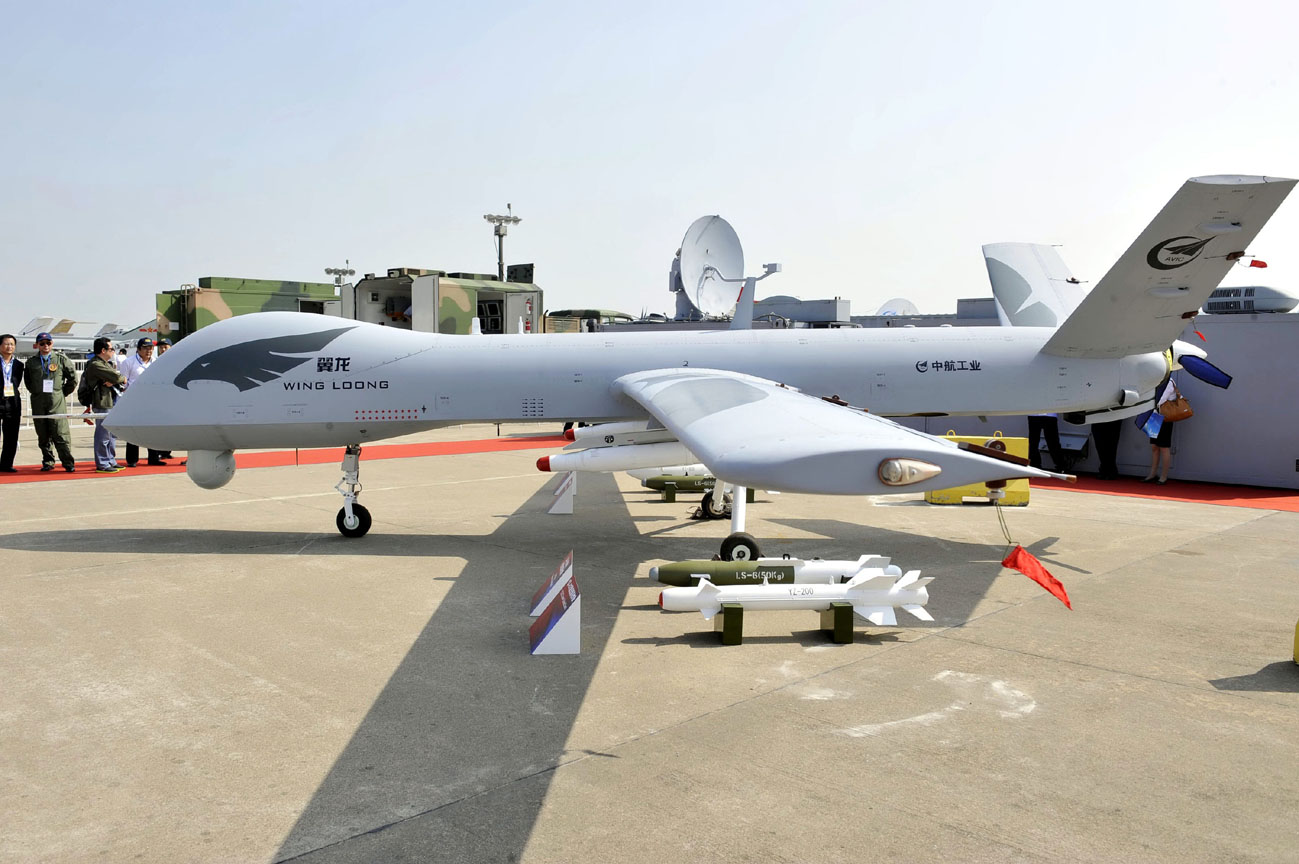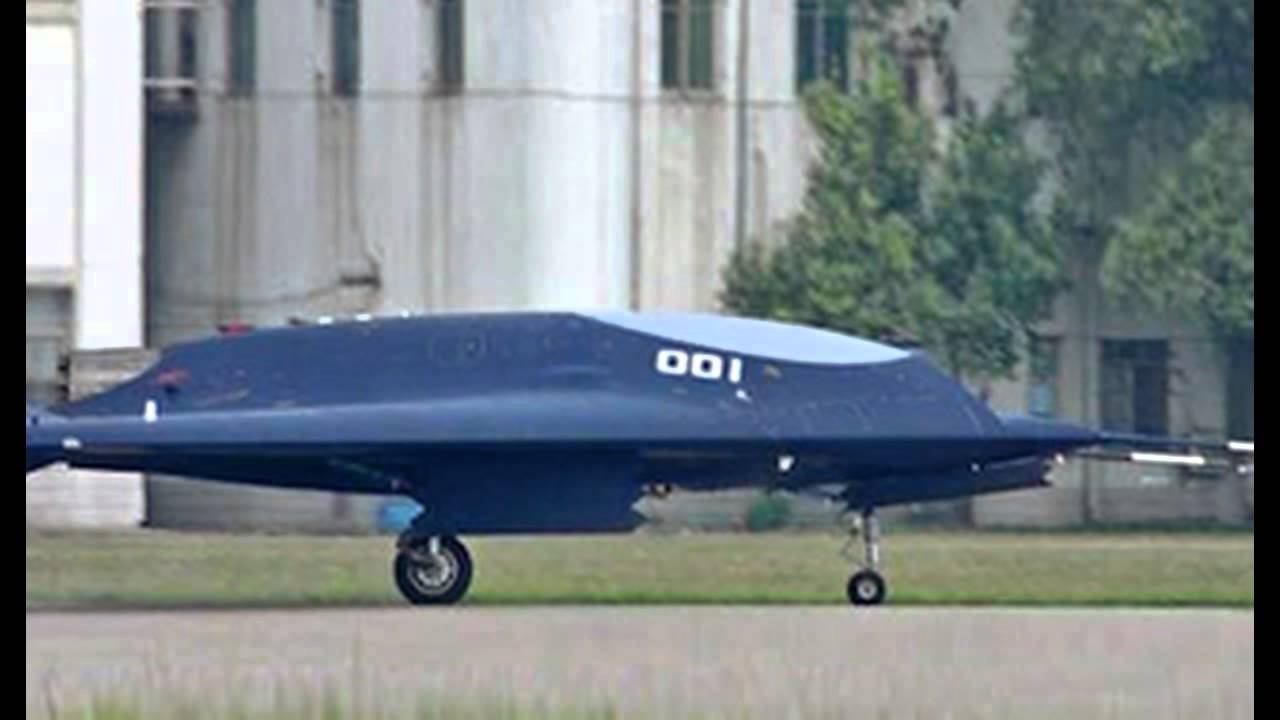China Is Suddenly a Leading Exporter of Armed Drones
Richard A. Bitzinger Monday, Jan. 18, 2016
With a regularity almost approaching that of the tides, there has recently been a frenzy of
fevered pronouncementsabout
China becoming a major arms exporter—and perhaps even giving serious competition to the traditionally front-running United States. Most of this is hype, but there is some truth to all the mania.
For the most part, China’s arms industry does not seriously threaten U.S. arms exports, at least not in terms of quantity. According to the Stockholm International Peace Research Institute, China garnered only
5 percent of the total global arms market from 2010 to 2014—good enough to rank third among the world’s arms exporters, but still well behind the United States, with 31 percent of the global market, and Russia, with 27 percent. Moreover, the bulk of China’s recent weapons shipments—nearly 70 percent—went to just three countries: Pakistan, Bangladesh and Myanmar.
That said, there are some areas where China is breaking new ground in the global arms trade, both in terms of new customers and new products. It has sold frigates to Algeria, trainer jets to Bolivia and Venezuela, and anti-ship missiles to Indonesia. More troubling, however, China has quite suddenly
become a key exporter of armed drones, also referred to as unmanned combat aerial vehicles, or UCAVs. It’s troubling, and not only because this is a potentially lucrative segment of the arms business that is likely to grow significantly over the coming decades and therefore challenge U.S. exports. Armed drones are also a growing proliferation concern, given that they are extremely effective and increasingly the weapon of choice on many battlefields.
Only a handful of countries besides the U.S. and China currently manufacture dedicated armed drones. Moreover, China is one of the few countries, along with the U.S., Israel, Pakistan and, recently, the United Kingdom, whose drones have actually been used in combat. In early December, the Iraqi military used a Chinese-built Caihong or CH-4B drone armed with a laser-guided missile to attack an Islamic State target. It was
Iraq’s first-ever drone strike.
How did China become a trailblazer in the global sale of armed drones? So far, it has exported two models, the Caihong and the Chengdu Pterodactyl or Wing Loong. Both bear a striking resemblance to two leading U.S. drones, the MQ-1B Predator and the MQ-9 Reaper. The Predator was originally a surveillance drone, later modified to carry Hellfire laser-guided missiles. The Reaper is a dedicated “hunter-killer” drone, in the defense industry’s terms.
The Wing Loong, designed and built by the Chengdu Aircraft Industry Group, or CAIG, is roughly the same size as the Predator, about 29 feet long, with a wingspan of 45 feet. It carries a much smaller payload, however, of about 220 pounds, compared to the Predator’s 1,100 pounds. Yet it costs about $1 million per unit, or just a quarter of the price of a Predator. It has been sold to Egypt, the United Arab Emirates and Saudi Arabia.
The Caihong, meanwhile, was developed by the China Aerospace Science and Technology Corporation, or CASC, and it is perhaps more disconcerting as a weapons platform than the Wing Loong. The original CH-3 version, which has been sold to Nigeria, appears to be relatively ineffective as a combat drone; at least one
crashed in Nigeria, ostensibly during operations against Boko Haram militants. The CH-4, however, is more or less a clone of the MQ-9 Reaper, and much more capable than the CH-3. It carries a relatively small payload, about 770 pounds, but larger, improved versions are on the way. In addition to Iraq, the CH-4 has been sold to Egypt.
More importantly, a new, larger version of the Caihong, the CH-5, is being readied for market. The CH-5 has a wingspan of 66 feet and a takeoff weight of about 3 tons. It can carry a maximum payload of nearly 2,000 pounds—about two and a half times more than previous Caihong drones.
Even more ominous is the fact that China is
reportedly developing a purpose-built, stealth drone, dubbed the Lijian, or the Sharp Sword. Although still a proof-of-concept prototype, the Lijian first flew in 2013 and could be the precursor to a family of Chinese stealth combat drones.
At the same time, however, operating armed drones has its own built-in challenges. The command and control of drones, let alone combat drones, is quite demanding. The support network behind drone use is enormous, especially for long-distance, long-endurance operations. Drones often require satellites for target acquisition and strike-control, as well as secure data links; without satellites, drones need line-of-sight data links or relay aircraft to remain in contact with remote operators. Pilots don’t come cheap, either: They have to be as skilled as a pilot of a manned aircraft, and the fatigue factor of remotely operating a drone can be high.
Moreover, drones have an incredibly high loss rate. The U.S. Air Force acknowledged in 2009 that it had
lost 70 Predator drones—at the time a third of its Predator fleet—in air crashes during its short operational history, mostly in Iraq and Afghanistan. Fifty-five were lost to equipment failure, operator error or weather, while four had been shot down by enemy forces and 11 more were lost to accidents on combat missions. In 2012, Bloomberg reported that the Predator, Reaper and Global Hawk were
“the most accident-prone aircraft in the Air Force fleet.”
Nevertheless, these problems aside, armed drones are here to stay. More nations are acquiring them and more are building them, making combat drones a significant proliferation concern in the near future. The U.S. is a major drone-producing country, but it has
considerable controls over the export of these systems. China, on the other hand, has relatively few scruples when it comes to what kind of military wares it sells and who buys them. Armed drones are one area of the global arms market where it could carve out quite a lucrative niche for itself, to the potential detriment of the U.S. and its allies.
Richard A. Bitzinger is a senior fellow with the S. Rajaratnam School of International Studies at Nanyang Technological University in Singapore, where his work focuses on military and defense issues relating to the Asia-Pacific.
China Is Suddenly a Leading Exporter of Armed Drones



















